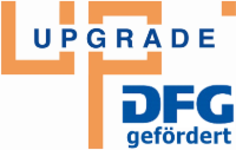Wie sollten Lernmaterialien in Inklusionsklassen gestaltet sein? - Instruktionsmaterialen und Arbeitsprozesse - How to Design Educational Material for Inclusive Classes
Laufzeit: 01.11.2015 - 31.10.2018
Förderung durch: Deutsche Forschungsgemeinschaft
Kurzfassung
The project investigates which design elements of work assignments influence the performance of pupils in inclusive classes positively. Within the framework of an empirical study we will analyze whether the use of simple language or enriching text with symbols facilitates pupils’ comprehension better. The aim is to deduce design criteria for work assignments, which improve the students’ performance in mathematics in inclusive classrooms.
Relevance
The conviction that the inclusion of children...The project investigates which design elements of work assignments influence the performance of pupils in inclusive classes positively. Within the framework of an empirical study we will analyze whether the use of simple language or enriching text with symbols facilitates pupils’ comprehension better. The aim is to deduce design criteria for work assignments, which improve the students’ performance in mathematics in inclusive classrooms.
Relevance
The conviction that the inclusion of children with disabilities into mainstream schools is necessary and life-enhancing expanded in our society during the last decades (Bundschuh 2012). Nevertheless, concerning the planning and realization of inclusive lessons only few empirically based findings exist. Ensuring that all pupils in an inclusive setting are able to read the work assignments would be a major step into this direction.
Theoretical Background
So far, only little research has been conducted to investigate how the educational material used in inclusive classes should be designed. For example, whether the adding of symbols to written text improves comprehension for people with disabilities has not yet been empirically based. Even though theoretical considerations support this assumption (cf. Frenkel & Bourdin 2009), results of present studies are contradictory (cf. Jones, Long & Finlay 2007; Poncelas & Murphy 2007).
Methodology
Students with and without learning disabilities will participate in the present study. In the context of a qualitative pre-study different varieties concerning the simplification of texts will be tested. The benefits of the use of simple language (cf. Network Simple Language, http://leichtesprache.org) as well as the advantages of linking text and symbols will be analyzed. An adequate register and an appropriate use of symbols shall thus be identified. For the main study a within-subject counterbalanced design is intended. The participants’ reading and mathematical ability as well as their IQ will be elevated beforehand. With regard to content the pre-study and the main study will, for example, focus on fractions and bodies. An activity-oriented approach which includes the work with hands-on materials will be pursued.
References
- Bundschuh, K. (2013). System – Inklusion – Betroffene. Grenzen und Möglichkeiten. [System – Inclusion – Concerned Persons. Limitations and Possibilities]. In: Cornelius Breyer, et al. (Eds.), Sonderpädagogik und Inklusion. (pp. 101-114). Oberhausen: Athena-Verlag.
- Frenkel, S.; Bourdin, B. (2009). Verbal, visual, and spatio-sequential short-term memory: assessment of the storage capacities of children and teenagers with Down's syndrome. In: Journal of Intellectual Disability Research, 53 (2), 152–160.
- Jones, F. W.; Long, K.; Finlay, W. M. L. (2007). Symbols can improve the reading comprehension of adults with learning disabilities. In: Journal of Intellectual Disability Research, 51(7), 545–550.
- Poncelas, Angela; Murphy, Glynis (2007). Accessible Information for People with Intellectual Disabilities. Do Symbols Really Help? In: Journal of Applied Research in Intellectual Disabilities, 20 (5), 466–474.
» weiterlesen» einklappen
